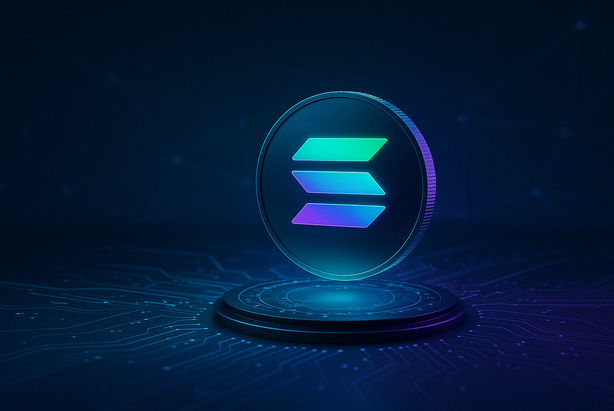TLDR
- VanEck lowered the Solana ETF management fee to 0.30% in its fifth SEC filing.
- The ETF will track Solana’s price and include staking rewards where allowed.
- Gemini and Coinbase will serve as custodians for the fund’s SOL holdings.
- The SEC review remains delayed due to the ongoing U.S. government shutdown.
VanEck has taken another step toward bringing institutional investors closer to Solana. The firm submitted its fifth amended S-1 filing for the proposed spot Solana ETF (VSOL) with the U.S. Securities and Exchange Commission. The updated filing introduced a reduced 0.30% management fee and outlined detailed plans for incorporating Solana staking, making it one of the most cost-effective digital asset ETFs in the market.
Updated Filing Details and Fee Reduction
The latest amendment positions VanEck’s Solana ETF as a low-cost investment option while expanding its staking policy. According to the filing, the VanEck Solana Trust aims to track the price performance of Solana (SOL) and, where permitted, include staking rewards. The ETF will list on the Cboe BZX Exchange under the ticker VSOL.
VanEck Digital Assets, the fund sponsor, may delegate a portion of SOL holdings through approved third-party staking providers such as Gemini or Coinbase Custody. This structure allows the fund to generate additional yield for investors while maintaining compliance with U.S. regulations. The sponsor fee of 0.30% will cover all standard operational expenses, excluding extraordinary legal or regulatory costs.
Fund Structure and Custody Framework
The VanEck Solana Trust will function as a grantor trust, similar to other spot crypto ETFs, and will not register under the Investment Company Act of 1940. This structure supports both in-kind and cash transactions, allowing authorized participants to create or redeem ETF shares efficiently.
Gemini Trust Company and Coinbase Custody will safeguard the ETF’s SOL holdings. These custodians will manage assets in insured, regulated environments designed to maintain transparency and security. The filing also allows for potential integration of liquid staking tokens (LSTs) if regulatory frameworks evolve to permit their use.
The staking approach will follow strict liquidity management rules. VanEck plans to maintain a 5% liquidity buffer to support redemptions during periods of market volatility. The policy will be reviewed annually to ensure efficiency and risk control.
Market Context and Solana Price Performance
Solana’s market price recently declined to around $200, a 3.7% drop in 24 hours. Analysts view this as part of a broader corrective phase. Market observers suggest that SOL could find support near $185, aligning with the 0.618 Fibonacci retracement level. A recovery from that range could strengthen bullish sentiment and renew investor confidence.
Technical analysts, including CryptoJelleNL, note that Solana has moved out of a year-long reaccumulation range between $120 and $200. The breakout has formed a “cup and handle” pattern, a structure that often precedes a continuation of upward trends. If prices hold above the $185–$200 zone, traders anticipate renewed momentum toward the $360 range.
Regulatory Environment and Approval Timeline
ETF analysts state that the VanEck filing currently falls under the Generic Listing Standards (GLS), which do not impose a strict approval timeline. Bloomberg analyst James Seyffart commented, “Things are under the GLS now, so there’s no fixed approval timeline.”
However, the ongoing U.S. government shutdown has delayed the SEC’s review process. According to Seyffart, “no one knows anything while that’s happening,” indicating that the approval process for spot Solana ETFs is on hold until normal government operations resume.
Despite the uncertainty, VanEck’s continued progress reflects growing institutional interest in regulated staking-based crypto products. The proposed ETF represents a hybrid model that combines Solana’s price performance with staking rewards under a regulated structure, offering a potential new path for institutional access to the Solana ecosystem.






